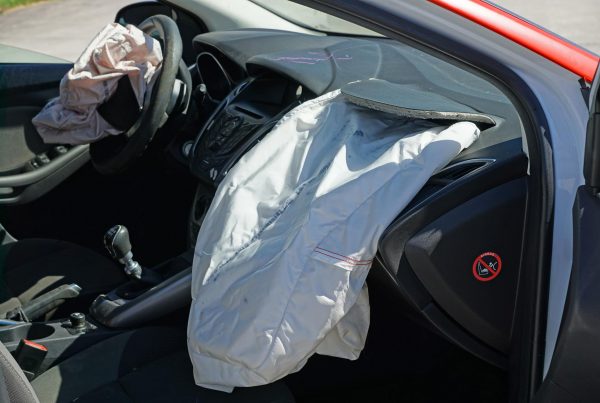The European electric vehicle (EV) landscape is a complex tapestry of diverse national regulations and political dynamics. Arturo Perez de Lucia, the influential General Manager at AEDIVE and Vice-President of AVERE, the European Electric Vehicle Association, sheds light on the challenges and opportunities facing the industry.
At the European NEV Industry Chain Conference, held in Munich on May 6th and 7th, 2024, Arturo Perez de Lucia, the influential General Manager at AEDIVE and Vice-President of AVERE, the European Electric Vehicle Association, we shared insights on the challenges and opportunities facing the European EV industry.
Navigating the Evolving Regulatory Landscape
The European electric vehicle (EV) landscape is a complex tapestry of diverse national regulations and political dynamics. Arturo Perez de Lucia, the influential General Manager at AEDIVE and Vice-President of AVERE, the European Electric Vehicle Association, sheds light on the challenges and opportunities facing the industry.
Perez de Lucia emphasizes the critical role of associations like AVERE in harmonizing efforts across Europe. “We work with public administrations, in this case with the European Parliament, in order to boost regulation – all those things that make e-mobility feasible in Europe,” he explains. The association’s primary focus is ensuring that policymakers understand the broader implications of electric mobility, beyond just sustainable transportation.
Integrating Energy and Mobility
Perez de Lucia underscores the symbiotic relationship between electric vehicles and energy efficiency. “The electric vehicle is the only propulsion system able to interact with the grid in order to boost renewables, distributed generation, and energy storage,” he says. This integration of the automotive and energy sectors is a crucial aspect of Europe’s sustainable future, as the region aims to become more energy independent and economically strong.
However, the blurring of traditional industry boundaries has created regulatory challenges. “The automotive industry has been the masters of the universe, making their own decisions,” Perez de Lucia explains. “Now, electricity has become part of the automotive industry, and the automotive industry has become part of the electricity market. They have to work together to find the better solution.”
Navigating Political Shifts and Populism
The upcoming European elections have raised concerns about the potential rise of populism and nationalism, which could impact the regulatory landscape. Perez de Lucia emphasizes that the association’s primary goal is to ensure that political parties understand the importance of industrial and energy competitiveness, regardless of their ideological leanings.
“Our main goal doesn’t matter what will be the party will lead Europe in the next years,” he says. “The most important thing for us is to make the political parties understand that we are talking about something which goes further than sustainability. There are things that all the political parties are aware of, and that is the capacity of being strong from an industrial point of view.”
Navigating Global Competition
Europe’s electric vehicle market is facing intense competition from global players, particularly China. Perez de Lucia acknowledges that Europe’s regulatory approach has been slower compared to other regions, which are more proactive in testing and implementing new technologies.
“If we stay in Europe discussing about regulation, about how to do this and how to do that, now we don’t make fast decisions in order to be leaders, we will have a big problem because we have China which is acting very, very fast,” he warns. The association is advocating for swifter and more practical regulatory changes to boost Europe’s competitive edge.
Embracing the Future of Mobility
The electric vehicle landscape is evolving rapidly, and Perez de Lucia believes that the industry must be prepared for dramatic changes in the coming years. “10 years ago, we didn’t expect what’s happening now,” he says. “In 10 years, we really don’t know what will happen, but we will be more efficient. We will be able to convert consumers into prosumers, and the user will be able to sell its own energy in the battery.”
Autonomous driving is another area that Perez de Lucia believes has been overlooked in Europe, with other regions like the United Arab Emirates and California taking a more proactive approach to testing and implementation.
Unlocking Europe’s Potential
Perez de Lucia’s insights underscore the critical role that associations like AVERE play in shaping the future of electric mobility in Europe. By advocating for practical regulatory changes, fostering collaboration between the automotive and energy sectors, and embracing technological advancements, Europe can unlock its full potential and lead the global EV race.
Looking ahead, he identifies several critical regulatory overhauls needed to boost Europe’s competitiveness. These include facilitating EV-grid integration for energy storage and distribution, promoting renewable energy development to meet domestic needs, encouraging cross-sector collaboration to foster innovation, providing clear incentives for EV and renewable energy adoption, and streamlining regulatory processes for faster decision-making.

![[English]](https://evinsights.co/wp-content/plugins/sitepress-multilingual-cms/res/flags/en.png)
![[Spanish]](https://evinsights.co/wp-content/plugins/sitepress-multilingual-cms/res/flags/es.png)




